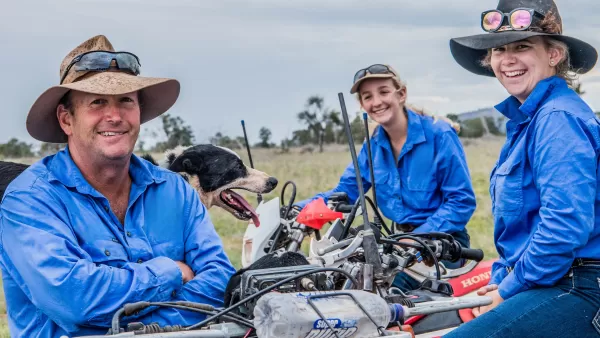Stanthorpe Stonefruit Farm
Energy Savings: 77% | Cost Savings: $5,881 | Capital Cost: $36,450 | CO2 Savings: 16.7 | Project Status: implemented
Industry:
Horticulture
Location:
Southern Downs
Pump Type:
Submersible
Irrigation Type:
Drip
Technology:
Irrigation and Pumps, Lighting, Tariffs, Solar Power and Renewables
The site energy consumption consists of:
- A packing shed with various items of machinery that process the fruit with a 5kW solar system;
- A cold room in the packing shed used 2-3 months of the year during harvesting;
- Workers accommodation with a 5kW solar system; and
- A number of diesel pumps for irrigation and water transfer.
Based on the site energy consumption, an audit process evaluated the following recommendations to reduce consumption and improve energy efficiency on-farm:
- Analysis of existing and available tariffs;
- Retrofit of lighting in packing shed and workers accommodation;
- Replacement of hot water system with solar thermal in workers accommodation;
- Upgrade the existing two solar PV systems to 6.5kW; and
- Replacement of the diesel transfer pump with a 7.5kW pump and 9.2kW solar array
The tariff analysis was completed on the site’s tariffs and it was found that the solar feed-in tariff had been changed by the retailer from $0.51/kWh to $0.08/kWh before the contract was expired due to a new meter being installed. The grower went to the retailer to have the feed-in tariff changed.
The audited lighting system in the packing shed and the worker’s accommodation consists of 400W high bay Mercury Vapour luminaries in the packing shed and 40 36W twin T8 fluorescent fittings in both buildings. The high bay fittings were recommended to be replaced with 200W LED lights which will reduce the lighting electricity usage by up to 50%. The audit recommended replacing the 36-watt fluorescent tubes with 18 watts LED tubes within the existing light fitting, which can use 40% less electricity. Maintenance costs will also be reduced as the LED tubes have a longer lifespan. It was suggested to replace half of the double fittings with LED panels that use 32W.
The replacement of the diesel pump included a 7.5kW submersible hybrid pump, a 9.2 kW pump drive with solar power, and a 14.85 kW PV system. The upgrade of the hot water system in one of the worker’s accommodation buildings to a solar thermal system was suggested due to their ability to heat to higher temperatures, for which a holding tank would also be required with a total payback period too large to be recommended. Additionally, the auditor identified the opportunity to increase the size of each of the Solar PV systems to increase the on-site generation, reducing the amount of grid electricity supplied and increasing the Feed-in-Tariff revenue.
The energy audit solutions recommended are summarised below:
| Recommendations | Lighting Retrofit in the shed | Lighting Retrofit in accommodation | Replacement of diesel pump | Solar PV Upgrades |
| Annual Energy Savings (kWh) | 773 | 162 | 63,000 (228 GJ) | 2,910 |
| Annual Cost Savings ($) | 281 | 46 | 5,600 | 1,484 |
| Emission Savings (tCO2-e) | 0.7 | 0.2 | 16.0 | 2.7 |
| Capital Cost ($) | 1,450 | 300 | 35,000 | 5,500 |
| Payback Period (years) | 5.2 | 6.5 | 4.5 | 1.4 |
Following the audit recommendations, the grower decided to retrofit the lighting system in the shed and replace the diesel pump with a 7.5 kW solar pump connected to a 9.2 kW inverter. Post-implementation metrics have been calculated from the Measurement and Verification process, with achieved energy savings of 77% and cost savings of 48%, as follows.
| Metric | Pre-Implementation | Post-Implementation | Reduction (%) |
| Energy Consumption (kWh) including diesel | 83,342 | 19,569 | 77 |
| Total energy Cost ($) | 12,138 | 6,257 | 48 |
| Emission Savings (tCO2-e) | 35 | 18.3 | 48 |
With the new solar pump, the farm has offset all diesel consumption, with additional time savings.
An energy audit is a good investment
An energy audit is a great way for a business to cut costs and boost productivity.
The Energy Savers Plus Extension Program was delivered by the Queensland Farmers' Federation with support and funding from the Queensland Department of Energy and Public Works.

